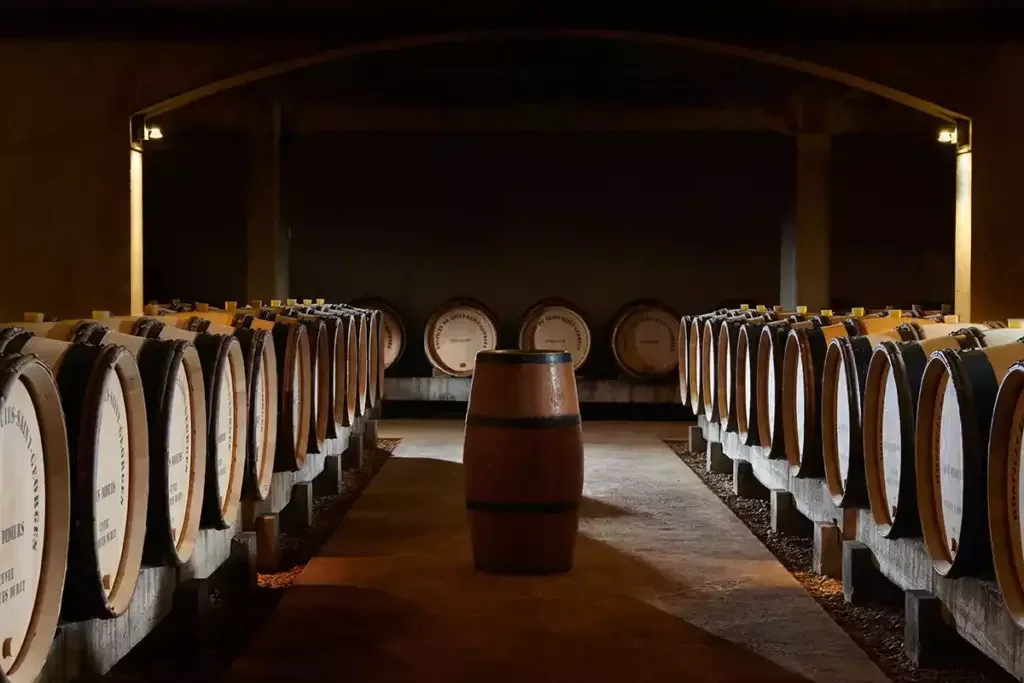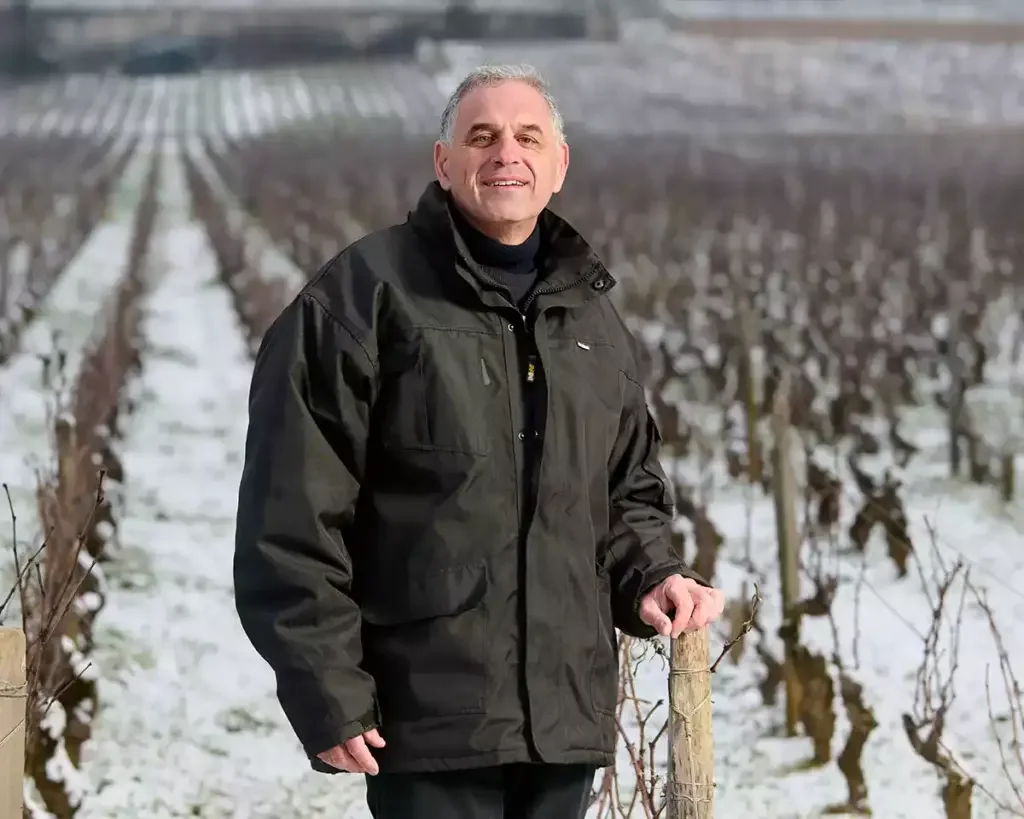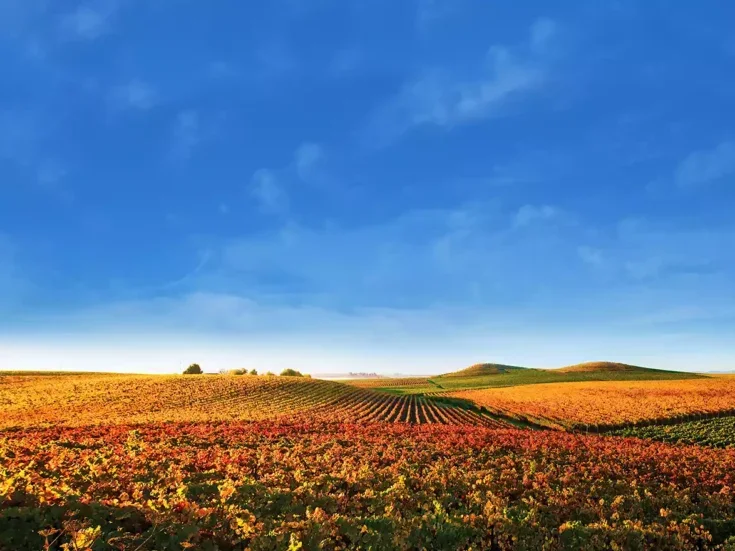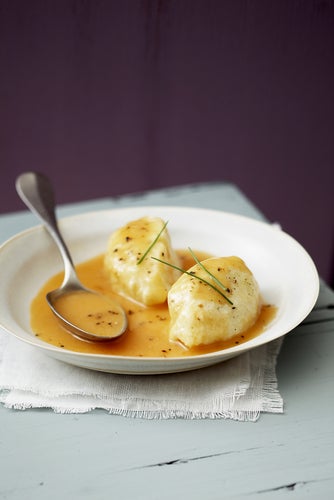
Sarah Marsh MW reports from the 2024 Hospices de Nuits-St-Georges Auction and asks if a slight drop in receipts may herald a much-needed softening of prices in the region as a whole.
The 1959 Nuits-St-Georges Premier Cru Les Didiers floated over my palate, delicate and pure; fragile yet vibrant. Laurent Delaunay, my host for the weekend, pulled it from the cellar beneath the 19th-century Château de Chaumont in l’Etang-Vergy to “illustrate our family’s long-lasting relationship with the Hospices.” The ’59 Didiers was purchased from the Hospices de Nuits-St-Georges by his father.
In those days, the Hospices de Nuits-St-Georges sold its wine in bulk to the local négociants, among which Delaunay was a major buyer, often purchasing the entire production, although not in the excellent 1959 vintage. From 1961, the Hospices’s wine was auctioned in barrel to the trade, but the auction remained largely in the shadows; a B2B event selling of barrels.
Meanwhile, the Delaunay family experienced a dramatic fall and revival of fortunes. After selling their domaine and négociant business in the 1990s, Laurent and his wife Catherine, who are both enologists, created Badet Clément in the Languedoc and in 2003 established DVP (Domaines et Vins de Propriété), designed to be Delaunay’s return ticket to Burgundy (see also WFW 83, 2024, pp.108–11).
Back in its heyday, the house of Edouard Delaunay was among the leading distributors of Burgundy, channeling the wine of famous domaines, including Domaine de la Romanée-Conti, around the world. Strategically, using DVP as a reincarnation of its distribution business, Laurent Delaunay plugged into a network of domaines to secure deals to buy grapes from them. Delaunay now works with 200 Burgundy producers and distributes to 60 countries.
In 2019, having bought back the family name, he completed the circle by producing an Edouard Delaunay portfolio of wines made from purchased grapes. Production takes place in the modern winery beside the house in the Hautes-Côtes de Nuits, which lies on the west side of the hill of Vergy. Laurent Delaunay is a strong advocate of Hautes-Côtes wines (as am I) and produces rather exciting single-vineyard cuvées, including a crunchy red from Les Dames Huguettes and a sapid-salty white from Les Lares, a west-facing parcel at an altitude of nearly 1,500ft (450m) on the Vergy hill. The Edouard Delaunay range, which extends all the way from Bourgogne, to grands crus, has grown to about 50 appellations.
Raising the profile of the Hospices de Nuits
When Laurent Delaunay returned to Burgundy, he was determined to raise the profile and fortunes of the Hospices de Nuits auction as well as his own. The auction was in dire need of a radical revamp. Hugues Cortot, a young auctioneer from Dijon, was engaged to liven up and shorten the fusty proceedings, which were conducted by candlelight, each lot ending only when a candle burned out. “It was so boring,” remarks Cortot. The new look included live streaming and, in 2020, the auction was opened up to private buyers.
I went along to that auction to taste the 2019 vintage, and the 2022 vintage last year (see WFW 80, 2023, pp.26–30). Tasting the 2023s this week, I’d say the winemaking approach seems to be evolving, with the domaine style showing a lighter touch, bearing in mind that the vineyards are almost exclusively in Nuits-St-Georges, where careful handling is required, especially in terms of structure and texture. The exception is a large parcel of village Gevrey, Les Champs-Chenys, which was donated to the Hospices de Nuits 16 years ago, enlarging the domaine to 12.5ha (31 acres).
Jean-Marc Moron, the estate manager, explained that he used a total of only three punch-downs in 2023, during an unusually fast fermentation of only four days. He considers the domaine’s style changed radically in 2002, becoming less tannic when operations moved to the new winery where there was more room to handle the different cuvées.
Maybe that was the beginning of an evolution that, in the 2023 vintage, has produced fruit-forward wines with smooth textures and easy charm. This is also a reflection of the vintage, which Moron describes as “fresh and elegant, riper, but with less sugar, than ’22.” The 2023 vintage also has quite low acidity, which contributes to the softer impression of tannin. The wines are very accessible.
Moron finds the style between 2009 and 2016, “for the fruit and the balance,” but is keen to emphasize that “managing the yields was key in 2023.” This entailed debudding, a green-harvest in July, with some parcels, including Les Fleurières and Les Vignerondes, requiring a second pass in August. “We are rare in 2023 for producing less than in 2022.”
A total of 150 pièces were auctioned at the 63rd Hospices de Nuits auction on Sunday, March 10, ten fewer than last year. This is small when compared with the 754 barrels auctioned at the Hospices de Beaune auction from its 60ha (150 acres) of vineyards. The Hospices de Nuits auction lacks the glamour of the Beaune event, which is more international, but the former has its own discreet and more local charm. Although it is the older of the two Hospices, founded in 1270, the Hospices de Beaune stole a march of 100 years in auctioning its production.
Both are charitable foundations, with the proceeds used to look after the sick. In Nuits-St-Georges, this has funded the rebuilding of the local hospital, which provides an extra level of care for the elderly. Each auction has a single charity pièce (one 228-liter barrel), auctioned to support a specific cause.
Changing cuvées and offerings
In the effort to drum up more interest in the Hospices de Nuits auction, this Cuvée des Bienfaiteurs, which was traditionally a selected barrel of one cuvée, was reborn two years ago as a blend, a “mosaic,” of all nine of the domaine’s Nuits-St-Georges premiers crus.
That requires about 33kg (73lb) of grapes from each vineyard. As all the vineyards are harvested within five days, Moron manages this cuvée by leaving some of the best fruit on the vine from day one and two, then selecting bunches on day three. Some bunches maybe a touch overripe, others spot-on, and the remainder a little underripe, in order to co-ferment the blend. A new-oak François Frères barrel is used for the élevage. It is sold on subscription at €150 a bottle, with donations invited. “Anyone can buy a bottle. We need to concentrate on the smaller buyers, as they can spread the word,” says Cortot.
Before 2017, this lot was auctioned, but moved to being sold by subscription: “Probably it was feared no-one would buy it,” says Laurent Delaunay, who thinks it may be time to start auctioning it once again. “It is challenging to publicize the auction, which is small and has no grand cru, and this could increase the auction’s notoriety.”
With this in mind, a one-barrel “special selection” of Les St-Georges—long considered the best among the village’s premiers crus, arguably of grand cru status—was introduced last year. In lieu of a grand cru, a “Sélection de Vieilles Vignes,” Cuvée Hommage à Hugues Perdrizet, is designed to pull in the punters. So, there are now three cuvées of Les St-Georges from the 1ha (2.5ha) parcel: Cuvée Georges Faiveley, Cuvée des Sires de Vergy, and Cuvée Hommage à Hugues Perdrizet.
The selection for Cuvée Hommage à Hugues Perdrizet is made in July, when Moron identifies and tags 400 vines within in the 3,800m2 (4,545 yard2) parcel of older vines. In last year’s auction, it sold for €40,000—disappointingly, below that of Cuvée Georges Faiveley. Two barrels of the latter were bought by Domaine Faiveley, and when I spoke with Guillaume Koch, Director of the Hospices Civils de Beaune, before this year’s auction, he suggested the high price (€55,000) paid by Faiveley for the eponymously named cuvée may have been motivated in part by the desire to see Les St-Georges promoted to grand cru. Frankly, I don’t think the Hugues Perdrizet was quite as good. He countered that it is better in 2023, and clearly someone thought so, because it sold for €60,000, the highest price under the hammer in this year’s auction. (This year Faiveley also bought two barrels of Cuvée Georges Faiveley, this time at €40,000 each.)

Different options to buy
Supposing you’d like to buy some wine from the Hospices, but don’t have 60 grand to spare, you can buy a case or even a bottle via a négociant. Prior to the auction, Delaunay offered a village and a premier cru from the 2023 vintage on its website. At the pre-auction stage, it is not clear which village and premier cru will be secured, although the photograph indicated Delaunay was aiming for Les Maladières-Les Brûlées Cuvée Grangier (with an estimate of €100–120 a bottle) and Premier Cru Les Didiers Cuvée Cabet (estimate €180–230 a bottle). The upper end was a maximum price, reflecting the price at which Delaunay would stop bidding. Buying en primeur entails a down payment of 80 percent of the maximum price, which will represent a discount of 10 percent on the price of the finished wine offered in 2025. When the wine is delivered, an adjustment is made, depending on the hammer price.
If a particular cuvée catches your eye, you can register an interest in advance of the sale with a friendly négociant. If there is sufficient cumulative interest for bottles, and advance payment based on a scale of previous prices, Delaunay will wave his paddle. If bids exceed his limit, your money is refunded. The day before the auction, he was musing over the interest in Les Terres Blanches which, in the event, he didn’t buy.
This year Delaunay secured five pièces, of which the sole village wine was the Gevrey. This was significantly fewer than the 12 pièces of 2022s, seven of which were premier cru. There is one barrel of Les Didiers Cuvée Cabet and three of Les Didiers Cuvée Fagon.
Les Didiers is Laurent Delaunay’s preferred appellation. “It is the signature of the Hospices de Nuits,” he says. The 2.4ha (6-acre) monopole abuts Les St-Georges on the north side, and Domaine de l’Arlot’s premier cru Clos des Fôrets on the south. Didiers and Fôrets are monopoles, giving no possibility of cross-referencing with wines from other domaines, so it’s difficult to pin down the exact character of these premiers crus. Laurent Delaunay finds Didiers has “the ripeness and depth of Les St-Georges and the minerality of Les Fôrets. It is a favorite of the family, especially of my grandfather.” Moron describes the terroir in Les Didiers as shallower than most of Les St-Georges. It has small stones and two veins of limestone close the surface and was planted in 1981 and 1950.
Post-auction, Delaunay is offering Les Didiers Cuvée Fagon. The cuvée is already available to reserve here:. The final price is €192 (€160 excluding VAT) per bottle.
But let’s say you want to push the boat out and buy a whole barrel—roughly 290 bottles—maybe with a group of friends. Well, since 2020 you can register with Cortot et Associés to buy directly. Cortot and Koch tell me that they have been targeting the Asian market, and there was certainly a contingent tasting from barrel in the cellar prior to the auction. Register with Cortot and you can try before you buy, or alternatively you can go with your négociant to the pre-auction tasting on the Saturday afternoon or Sunday morning. They may even take you to the grand lunch at the Château de Clos Vougeot before the auction.
The small print
If you go it alone, bear in mind that, quite swiftly, you will have to employ the services of a négociant, since the wine must be aged in Burgundy and cannot be removed before bottling. The Domaine de Hospices de Nuits requires successful bidders to supply the name of a négociant within two weeks of the sale, although barrels need not be moved until July 1. Cortot publishes a list of négociants willing to do this, but equally you can approach anyone with a négociant license and listed premises. It’s worth considering the style of the négociant’s own wines, the temperature of its cellars, and approach to aging and finishing the wine. Thibault Liger-Bélair tends to keep wines in barrel for 20 months, but may rack, while Delaunay ages wines between 12 and 18 months un-racked, and will bottle the 2023 vintage early, since the wines are quite forward.
Cortot tells me there were some buyers in last year’s auction, probably trade buyers, who bought more than one barrel of the same cuvée to be matured in the cellars of different négociants. It will make a difference and, if you have a good relationship with your négociant, it could be interesting to be involved in the élevage of your barrel.
Buying direct will save you a bit of money, but you can spread your costs when buying through a négociant. Delaunay takes 50 percent before the auction and the balance when the wine is bottled.
And then there are the following costs; removing the barrel to the négociant’s cellar, a fee for aging the wine, topping, analytical controls, bottling, labeling, and packing. There are also the dry goods—bottles, corks, capsules, and labels. Now some négociants may break this down for you, but Delaunay has an all-inclusive fee of €4,500 per barrel, for which it will also customize the (terribly old-fashioned) Hospices de Nuits label and pack your wine into nice wooden boxes. This is an ex-cellar price, including freight documents but not delivery. Wine can be moved under bond, but otherwise there’s duty and tax to be paid at this point.
And when considering the hammer price (plus commission and tax), be aware that this does not include the cost of the barrel—€727 plus VAT this year. On the subject of oak, at the Domaine de Hospices de Nuits, everything is aged in new barrels, divided as equally as possible between François Frères, Taransaud, and Damy. 100% new oak is a big ask for any Burgundy. The cooper will certainly influence the wine, and beware—the samples shown at the pre-auction tasting are blends of all the barrels in each cuvée.
Moron says no one asks to taste from specific barrels, but is happy to oblige and to supply the number of the favored pièce in the catalogue. I tasted Les Boudots Cuvée Mesny de Boisseaux from three barrels, with predictable results: Damy makes the wine creamy and rounded; Taransaud is straighter and tighter, while François Frères gives shoulders and structure—fine if you want to age your wine, but the oak will not integrate quickly for drinking the wine young. The one-barrel cuvées of Bienfaiteurs and Hugues Perdrizet are aged in François Frères, but are destined for aging, one hopes.
Following the auction, Cortot observed that, “US buyers preferred to be represented at the sale, and did not buy direct. The sale continues to open up to individuals, with a slight increase in the number of buyers at the sale thanks to them—an increase of 10 percent.”
The 63rd Hospices de Nuits-St-Georges Wine Auction: The results
And so, to the figures for the 63rd Hospices de Nuits-St-Georges Wine Auction. The auction raised a total of €2,281,500. This makes it the third-best auction in the history of the Hospices, but this was 36 percent down on last year. From the total 19 cuvées, there were 150 barrels, ten fewer than last year, but the wines generally achieved lower prices.
The average hammer price of the red wine (18 of the 19 cuvées) was €15,750, a fall of 29 percent from 2023. The white cuvée fell by 38 percent. For context, the average price of 2021 reds was €16,668.
This brings to an end a four-year trend of rising prices. The 2023 auction (of the 2022 vintage) hit a record of €3,603,000, an increase of 123 percent over four years, during which the average price of a barrel more than doubled (€22,519 in 2023, versus €9,728 in 2019).
The two exceptions to the downward trend were the Premier Cru Les St-Georges Cuvée Hommage à Hugues Perdrizet, which fetched €60,000, an increase on €40,000, and Cuvée des Bienfaiteurs, the charity lot, which hit an historic record of €68,330, an increase on €67,430 last year. It was auctioned on behalf of the Clément-Drevon Foundation, which supports medical research in the Bourgogne-Franche-Comté region.
Given that the proceeds are used to support the local hospital, it is disappointing to see falling prices, but as an indication of softening prices in Burgundy, it is welcome and overdue.

Tasting and prices of the 2023 vintage
Each barrel is sold individually, but they are grouped with several from the same appellation. Buy one, and there’s the option to buy the remainder for the same price. I have given prices for this year and last. The Hospices has one white wine from the premier cru Les Terres Blanches, which lies at the top of the slope, across the border in Premeaux, together with Les Didiers and Les Corvées Pagets. There are five village cuvées. The Gevrey-Chambertin is from a single parcel, while the Nuits-St Georges village wines are blends. Once again, two stood out. I tried all the wines twice—on the Saturday afternoon before the sale, and again the following morning.
A few négociants will have bottles of the 2023 to purchase. Albert Bichot was the largest buyer (as it was at the Hospices de Beaune auction, as usual) acquiring 41 pièces, which represents 21 percent of the volume and 28 percent of the total sales value.
Nuits-St-Georges Premier Cru Les Terres Blanches Cuvée Pierre de Pême
Spicy, exotic, even with notes of mango. Rounded, with a creamy texture and soft acidity. The oak is certainly influencing the flavor, texture, and weight, but there is a firm core and freshness on the finish. €20,000–21,000 (2022, €32,000–34,000).
Gevrey-Chambertin Les Champs-Chenys Cuvée Irène Noblet
A single, quite significant parcel from which 10 barrels were made. It lies between Charmes-Chambertin grand cru and the R74. A nicely balanced and quite intense Gevrey, feeling fresh for the vintage and smoothly textured. €10,000–11,000 a barrel (2022, €13,000–16,000).
Nuits-St-Georges Les Bas de Combe Cuvée Guillaume Labye
A blend of Les Lavières and Les Bas de Combe, this is my favorite village wine from Nuits, for its fluidity and silky texture. Pretty red fruit, it will come round quickly and be enjoyable as a young wine. It stretches out well for a village wine, into a vibrant finish. €9,000 a barrel (2022, €15,000).
Nuits-St-Georges Les St-Julien-Les Plateaux Cuvée Claude Poyen
A blend of St-Julien and Plateaux, this is much more punchy and firmly structured. Earthy and dark, with some grip and a decent finish. A village wine with good aging potential. €7,000–8,000 a barrel (2022, €14,000–15,000).
Now for the nine premiers crus. There were 13 red wines in the auction, as premiers crus Les Didiers and Les St-Georges are each divided into three separate cuvées. I found Les Rues de Chaux very rustic. The first three premiers crus (below), which come from the north side of the village, lacked a bit of vitality, intensity, and pizzazz. A bit disappointing. Over on the south side, Les Porrets-St-Georges showed more layering and length.
Nuits-St-Georges Premier Cru Les Vignerondes Cuvée Bernarde Delesclache
Generous and fruit-driven, with an open and broad palate. The forest fruits are pleasant, but it’s very oaky on the finish. Quite squidgy, lacking much definition, but it has easy appeal. €10,000–13,000 a barrel (2022, €21,000).
Nuits-St-Georges Premier Cru Les Boudots Cuvée de Mesny de Boisseaux
Full, rounded, and succulent. Somewhat jammy fruit and a rich texture. Plenty of ripe appeal upfront, but I’d like to see more follow-through. €21,000 (2022, €33,000–41,000).
Nuits-St-Georges Premier Cru Les Murgers Cuvée Guyard de Changey
Straighter and lighter bodied than the Boudots, and a bit fresher. A slight piquancy combines with spicy notes. €18,000–21,000 a barrel (2022, €25,000–26,000).
Nuits-St-Georges Premier Cru Les Porrets-St-Georges Cuvée Antide Midan
Not a bad Porrets. It’s very juicy upfront, full, rounded, and smoothly textured. Decent concentration, and this supple and seductive Porrets finishes with some intension and freshness. €16,000 (2022, €24,000–25,000).
The following two wines are both in Premeaux and show good typicité.
Nuits-St-Georges Premier Cru Les Terres Blanches Cuvée St Bernard de Cîteaux
Not better than the Porrets, and not as long, but more stylish. It’s tight, straight, light, and mineral. Black-fruit ripeness, but slim, zesty, and neatly edged. A delicate and crispy Nuit-St-Georges, with a savory, salty finish. Right up my street. €15,000–16,500 (2022, €21,000–25,000).
Nuits-St-Georges Premier Cru Les Corvées Pagets Cuvée St-Laurent
More persistent than the previous wines. It is quite smothered in new oak at the moment, but the intensity of the mid-palate, the abundance of lively fruit, and the glide into a focused finish all bode well for this wine. I like it. €17,000–18,000 a barrel (2022, €20,000–21,000).
And to finish, the premiers crus Les Didiers and Les St-Georges, although the younger vine cuvées are not finer than some of the proceeding wines.
Nuits-St-Georges Premier Cru Les Didiers Cuvée Cabet
Forty-year-old vines. Fruity, maybe slightly jammy, but sufficient acidity to balance. It’s attractive and easy-going. A relatively simple, fruit-driven style after the previous wines, but charming. €18,000–19,500 a barrel (2022, €20,000–22,000).
Nuits-St-Georges Premier Cru Les Didiers Cuvée Jacques Duret
An equal blend of 40- and 70-year-old vines, which is providing more structure and body. It has smooth, graphite minerality, with good layering of sweetness and acidity. Notably longer to finish than the young vines. €18,000 a barrel (2022, €18,000–24,000).
Nuits-St-Georges Premier Cru Les Didiers Cuvée Fagon
Named in honor of Dr Guy-Crescent Fagon, a benefactor of the Hospices and botanist who was Louis XIV’s physician and Director of Gardens, promoting the health benefits of Burgundy over Champagne to the king. Oak-dominated on the Saturday, yet quite accessible on the Sunday. It is more compact, but also more sophisticated, than the Jacques Duret. Ripe hedgerow fruit and satin-smooth elegance. Quite like a Les-St-Georges. Rather suave, with a lingering finish. €19,000–24,000 a barrel (2022, €35,000–38,000).
Nuits-St-Georges Premier Cru Les St-Georges Cuvée des Sires de Vergy
An inviting wine from the younger vines. There is blueberry freshness and plenty of energy. Oodles of both. Not especially deep, but I do like the purity and fluidity. €37,000–41,000 (2022, €41,000–48,000).
Nuits-St-Georges Premier Cru Les St-Georges Cuvée Georges Faiveley
This cuvée was named in recognition of Georges Faiveley’s contribution to the local inhabitants during World War II. Made from some of the older vines, this is a well-cut wine. It has depth and definition. Intense, yet contained and discreet. It channels into a properly persistent finish. The real deal. €36,000–40,000 (2022, €51,000–55,000).
Nuits-St-Georges Premier Cru Les St-Georges Cuvée Hommage à Hugues Perdrizet
This new one-barrel cuvée is a selection of the estate’s oldest vines, named after the Hospice’s first vineyard benefactor. A François Frères barrel. Super-concentrated and compact. It’s more muscular, richer, and bigger all round than the Cuvée Georges Faiveley. Quite thunderous. I prefer a more sophisticated, sleeker interpretation of Les St-Georges, so prefer the Cuvée Georges Faiveley. €60,000 (2022, €40,000).






